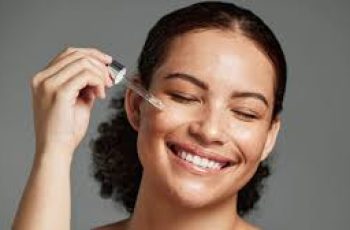
Can Niacinamide be used with Mandelic Acid?
There is a certain amount of science involved in skin care application. When it comes to layering ingredients, we often forget that different pH levels change the efficacy of each active ingredient and how it works on the skin. Many users mistakenly believe that layering ingredients can lead to adverse side effects such as rashes, itching, and discomfort. However, these can be easily avoided if you know how to combine different ingredients in your daily routine. You may be surprised to know that most skin care ingredients can be used in a single routine. You just need to understand their pH levels and know when to apply them to the skin.
This brings us to our question today: Can Niacinamide be used with Mandelic Acid? Let’s quickly summarize how these ingredients work and what benefits they can bring to the skin.
What is Mandelic Acid?
It is extracted from bitter almonds and belongs to the group of chemical peels called alpha hydroxy acids, also known as AHAs.
Has a larger molecular size, making it gentle enough for all skin types, even those prone to redness and sensitivity.
Removes the layer of dead skin cells on the surface of the skin to reveal fresher new cells underneath.
Fights signs of aging like fine lines and wrinkles and significantly reduces their appearance in a few weeks.
Helps fight clogged pores and skin blemishes. Mandelic acid removes excess sebum, dirt, bacteria and other impurities from pores.
Mandelic acid prevents hyperpigmentation like melasma, dark spots, post-acne scars and other areas of uneven skin tone.
There are some side effects like itching, swelling, redness, itching etc. Therefore, you must seek advice from your doctor or dermatologist before adding any new ingredient to your routine.
If you want to know more about mandelic acid, read our dedicated blog post.
What is Niacinamide?
Niacinamide is a form of vitamin B3 that is extracted from brewer’s yeast and grains.
Known for its moisturizing properties, it ensures that moisture is locked in the skin. This helps the skin barrier to function properly and protect itself from free radicals.
Can be effectively combined with other ingredients, even chemical acids like glycolic, lactic and mandelic acid.
May help regulate sebum production, making niacinamide a useful ingredient for those with acne-prone and dry skin types.
Visibly reduces the appearance of enlarged pores and ensures an overall improved complexion.
Fights signs of aging such as fine lines, wrinkles, and signs of dehydration on the skin’s surface.
Tightens the skin around the chin and neck, helping to improve skin tone.
Restores skin’s radiance and reduces the appearance of dullness and lackluster skin common to the skin.
Learn more about niacinamide at Beauty Insider.
How to Use Niacinamide and Mandelic Acid?
There are a variety of ways to use mandelic acid and niacinamide together. Unlike other active ingredients, you can actually layer these ingredients. However, each has a different pH level, and if they are mixed too quickly, the pH of your skin may shift. This can lead to redness, itching, flaking, and sometimes severe irritation. Here are some examples of how to use niacinamide and mandelic acid together.
Using These Two Ingredients in Your Everyday Life
As I suggested before, you can use mandelic acid and niacinamide together. Remember that you need to wait about 10 minutes between applications to allow the active ingredients to be absorbed and the pH to be balanced.
Apply mandelic acid, then niacinamide
First, use a cleanser or exfoliating toner containing mandelic acid to remove dead skin cells and dirt from your skin. Then use niacinamide to bind moisture into the skin so that the skin barrier functions properly and can protect itself from free radicals such as pollution, central heating, cigarette smoke and other environmental influences.
Alternate products at different times of the day
You can also use one active ingredient in your morning routine and another in your evening routine. If you already have an established collection, this is an effective way to make the most of all your skincare products.
There is a basic rule for skincare: apply your skincare products in order of consistency. Start with the thinnest and end with the thickest. This allows you to determine which ingredient to apply to your skin first.
What not to mix with mandelic acid?
It is believed that it is best to avoid mixing mandelic acid with other acids such as glycolic acid, lactic acid, salicylic acid and retinol. This is because using too many exfoliating ingredients can over-irritate the skin, leading to facial redness, itching, flaking, severe dryness, and general discomfort.
If you want to use AHAs and mandelic acid, you can do so by alternating the days you use each active ingredient. For example, you could avoid using mandelic acid on the nights you use retinol. When introducing new ingredients to your routine, you may want to do a 24-hour patch test before applying the new formula to your face. To do a patch test, you first need to apply a 10p-sized small amount to the inside of your arm. Leave the product there overnight, and if there are no signs of irritation in the morning, you can use the product on your face.
What not to mix with niacinamide?
It was believed that you should avoid using vitamin C when using niacinamide because both are antioxidants and work on the skin in similar ways. This information is now considered somewhat outdated, and many product formulas contain a stabilized form of vitamin C, reducing concerns about combining these powerful drugs.
Here is more information on using niacinamide and mandelic acid. Don’t forget: If you have any questions, you can find one of our health experts on Instagram.


